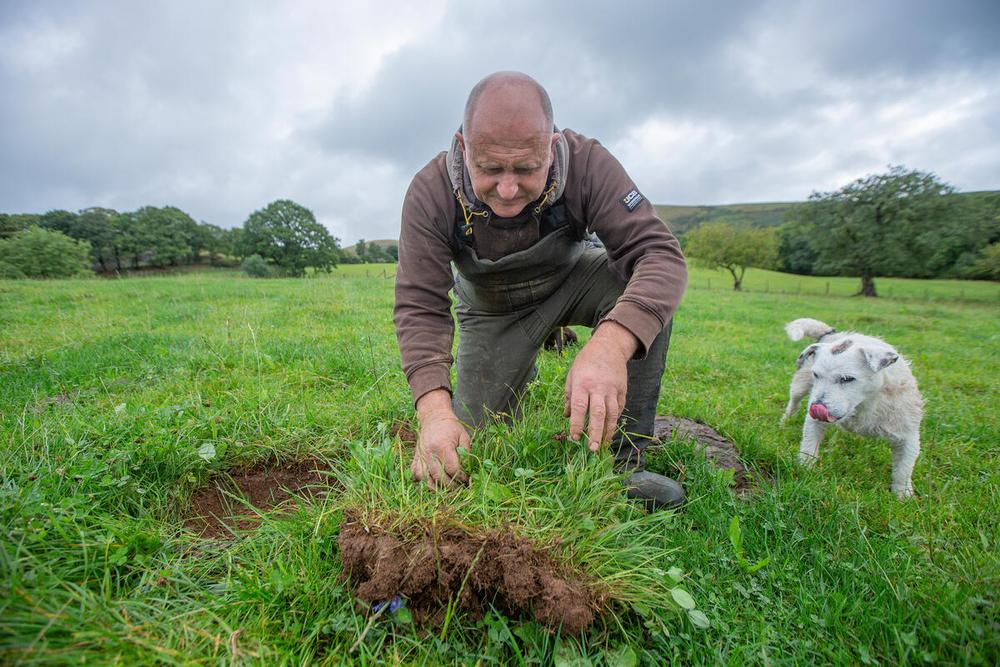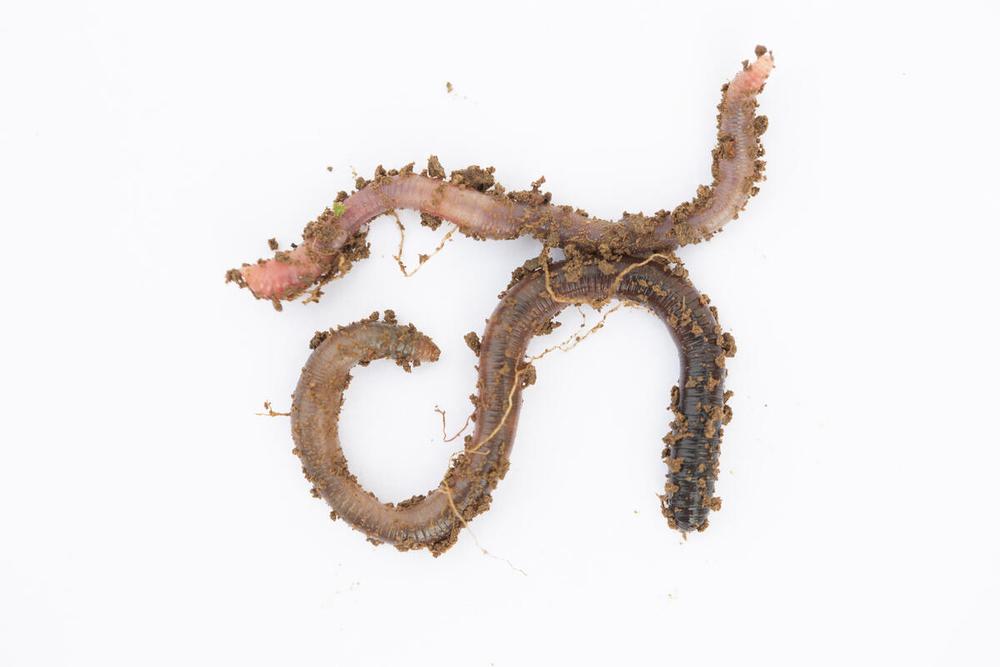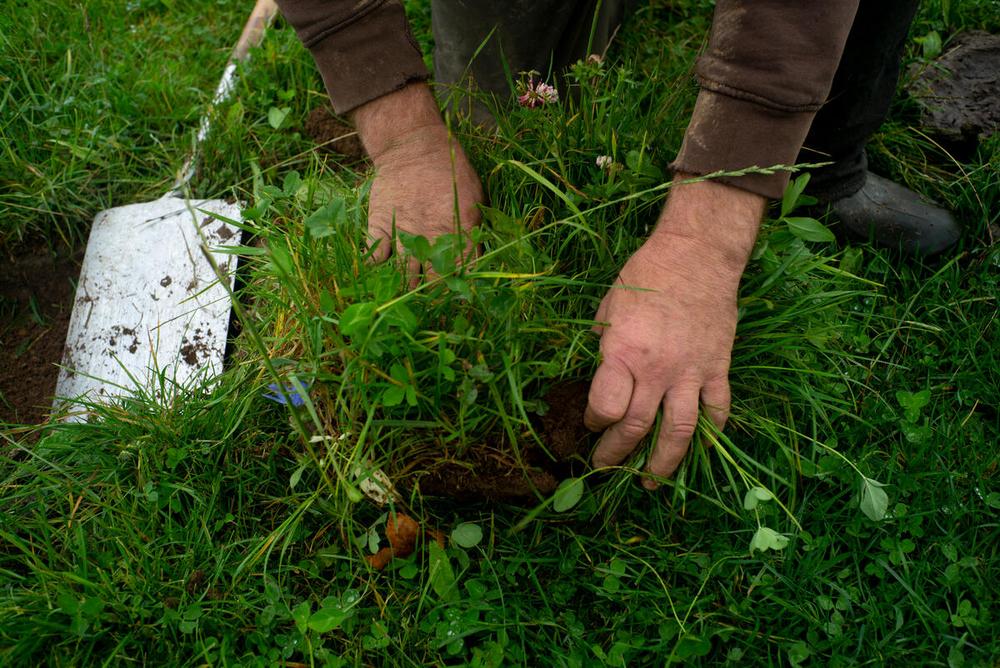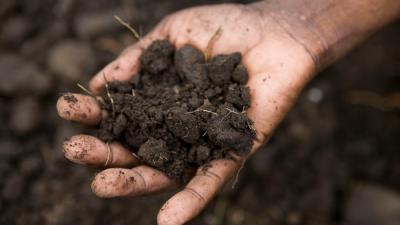Why are we talking about soil?
Soil health is a cornerstone of environmental sustainability. It plays a crucial role in securing our food supply, mitigating climate change and building resilient ecosystems.
Healthy soil sustains plants, animals and people. It contains microorganisms, fungi and many organisms that create a balanced and fertile environment. This dynamic ecosystem acts as a natural filter, purifying and storing water as it seeps into the ground.

Fascinating facts about soil
- Good soil smells good, bad soil smells stale. Farmers smell their soil daily to monitor the health of the grass and root structures.
- One teaspoon of soil contains more microbes than there are people on Earth.[1]
- Soil should be full of life, from different grasses, dandelions and clovers, to slugs, bugs, worms and roots.
- There should be 64 worms in every cubic foot of soil to indicate good soil health.
- 60% of all life on Earth lives in the soil.[2]
- Without healthy soil, there would be no life on our planet, as food couldn’t grow.[3]
- Soils are the second largest active store of carbon after the oceans, storing 40,000 billion tonnes of carbon.[4]
- A third of soils are degraded worldwide, affecting an estimated 3.2 billion people.[5]

Why soil health matters
Without healthy soils and biodiversity, our food system would cease to function. Soil is the combination of geology, living and decaying organisms and environmental processes creating a physically structured ecosystem. Healthy soils are one of the fundamentals of food production; soil sustains plant growth, while also acting as a repository for moisture, facilitating the nutrient cycle and sequestering carbon, alongside other ecosystem services. Ensuring UK soil is in good health is essential to safeguard the resilience of our agricultural sector. Apart from its intrinsic value and enriching our wellbeing, biodiversity also underpins productivity: abundant, balanced populations of diverse species, from plants and fungi to insects to birds, reptiles and mammals, fulfil niches within the environment, from digesting waste products, to pollination, to predation; this supports ecosystem health, including driving the nutrient cycle. Biodiversity is therefore key in ensuring our landscapes continue to be productive.
Healthy soil provides:
- Clean air and water – by filtering pollutants.
- Bountiful crops and forests – by supporting diverse plant life and productive land. This increases food and nutrition security and improves livelihoods.
- Resilient ecosystems – by improving the diversity of plant and animal life
- Climate change mitigation – as healthy soil stores carbon, keeping it out of the atmosphere.
Farmers rely on healthy soils to grow and produce food. But every year, the world is losing approximately 36 billion tonnes of nutrient-rich topsoil and 17 billion tonnes of cropland soil due to erosion [6], chemical inputs and climate change. Such land degradation negatively affects about 3.2 billion people [7] – especially in developing communities.

What is WWF doing to help?
Prioritising soil health is a powerful tool in the fight against climate change and environmental degradation. By adopting sustainable practices, we can ensure our soil remains a vibrant and life-giving resource for generations to come.
At WWF, we’re promoting practices that enhance soil health, including:
- Regenerative agriculture – embracing practices like crop rotation, agroforestry and integrating livestock to nurture biodiversity and enhance soil health.
- Minimal tillage and cover cropping – practices that promote soil structure and water retention, reducing erosion and nutrient runoff.
- Sustainable agriculture – implementing practices that preserve and restore critical habitats, protect watersheds and improve soil health and water quality.
Sources
[1] UK Centre for Ecology and Hydrology https://www.ceh.ac.uk/our-science/case-studies/case-study-why-do-soil-microbes-matter
[2] Anthony et al (2023) Enumerating soil biodiversity https://www.pnas.org/doi/full/10.1073/pnas.2304663120
[3] John Innes Centre https://www.jic.ac.uk/advances/soil-the-foundation-of-life-on-earth/
[4] Soil: the hidden part of the climate cycle, European Commission (2016) https://climate.ec.europa.eu/system/files/2016-11/soil_and_climate_en.pdf
[5] United Nations Office for Disaster Risk Reduction https://www.undrr.org/understanding-disaster-risk/terminology/hips/en0005
[6] European Soil Data Centre https://esdac.jrc.ec.europa.eu/themes/global-soil-erosion
[7] IPBES, The IPBES Assessment Report on Land Degradation and Restoration (2018) https://www.ipbes.net/assessment-reports/ldr
